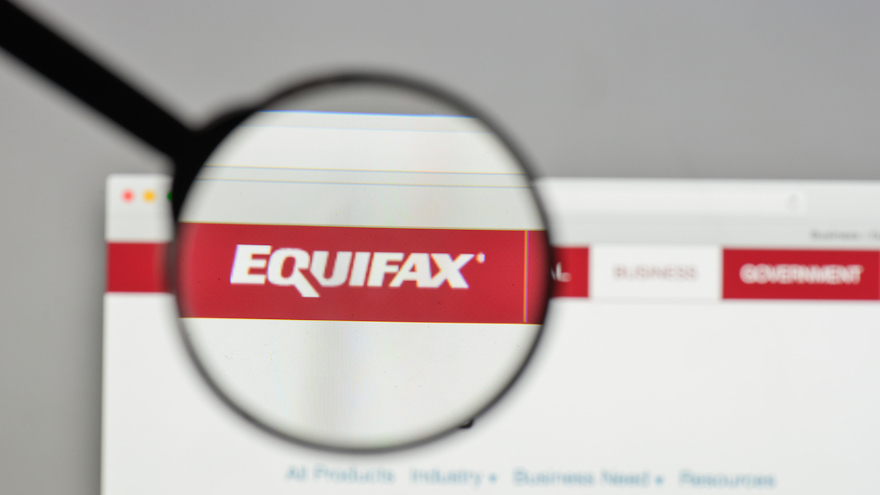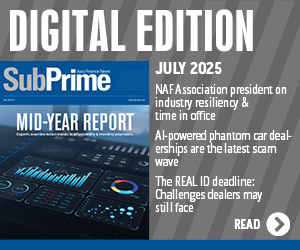Equifax: Delinquency ‘not as high as it could be’

Image by Casimiro PT / Shutterstock.com
Equifax shared its latest look at auto-finance delinquency based on data available through April 28. While experts said their overall delinquency reading is “not as high as we were anticipating it could be,” Equifax did find younger customers are navigating their budget challenges created by the coronavirus pandemic better than their older contemporaries.
According to the data sent to SubPrime Auto Finance News this week, delinquent contracts surpassed 3.17% of all outstanding auto financing. During a four-week stretch from April 7 through April 28, the number of delinquent accounts grew from 2.58 million to 2.63 million. The balance attached to those contracts also rose from $33.58 billion to $33.89 billion.
Equifax pointed out that April typically represented a cyclical decline in delinquency because some customers use their tax refund money to bring their accounts back to current. Jennifer Reid, vice president – automotive marketing & strategy leader – U.S. information solutions (USIS) at Equifax, touched out analysts’ suspicions about what the auto-finance delinquency data might be before gathering it and then their reaction when they uncovered the figures.
“Overall, we were generally expecting delinquency to increase given the unprecedented impacts from COVID-19. However, I think what was interesting is that it is not as high as we were anticipating it could be,” Reid said.
“While we recognize that it is still early, it appears that consumers are still paying their debt,” she continued. “We are anticipating delinquency to stay relatively lower, at least in the near term, due to enhanced unemployment benefits, stimulus and accommodations being made by lenders under the CARES Act which will keep positive accounts reporting positive.
“We will need to continually watch these trends closely to see if any additional economic impact from COVID-19 is realized,” Reid went on to say.
Equifax’s latest data also indicated that younger consumers are maintaining their contracts at better rates than older customers. Equifax indicated customers who fall into Gen Z (23 and younger), millennials (age 23-39) and Gen X (40-54) have seen their delinquent balance stay nearly steady during the reporting period at 2.04 million accounts.
But for customers age 55 and older, the number of delinquent contracts rose from 556,000 to 582,000 with the outstanding balance involved growing from $6.99 billion to $7.25 billion.
Reid offered a reason why thus far younger demographics have better delinquency performances currently as opposed to older populations.
“Typically, the younger demographic has less overall financial obligations, with the exception of student loan debt. In response, we saw the CARES Act provide relief in the way of suspending student loan payments until Sept 30, and this in conjunction with the other forms of assistance,” she said.
While the delinquency data might not be as dire as Equifax initially suspected, there appear to be consumer ingredients in the marketplace that could lead to more deterioration.
Also released this week, LendEDU published its third survey of 1,000 adult Americans, tracking how the pandemic is impacting finances. Among the newest highlights:
• 26% of eligible respondents have still not received their stimulus checks, while 52% of those who have been laid off have filed for unemployment benefits but 54% have yet to receive those unemployment benefits.
• Amongst those individuals who haven’t yet received unemployment benefits, 79% have already had to use funds from a savings account to cover expenses, 86% are worried about running out of money and 42% have had to take on more credit card debt then desired.
• 62% are concerned about their retirement savings, which is down from 72% on April 1. The drop could be due to the strong performance of the market as of late.
• The average American has spent $987 on food and supplies since the pandemic started here in the U.S. This is up 56% from the second survey and 194% from the first survey.
• Once lockdown measures are lifted, 26% of respondents said it will take them between one and three months to begin going out again and spending money as consumers like they used to, while 18% said it will take them 3-6 months, and 16% said between two weeks and one month. 13% said between six months and one year, 10% said immediately, and 7% said over one year.


